Navigation
Install the app
How to install the app on iOS
How To Use Progressive Web App aka PWA On 420 Magazine Forum
Note: This feature may not be available in some browsers.
More options
You are using an out of date browser. It may not display this or other websites correctly.
You should upgrade or use an alternative browser.
You should upgrade or use an alternative browser.
Relaxed's Outdoor Medical Grow - 2017
- Thread starter Lester Freeman
- Start date
- Thread starter
- #202
Couple more pics from yesterday, at the right Sun angle, after some more fertilizer.
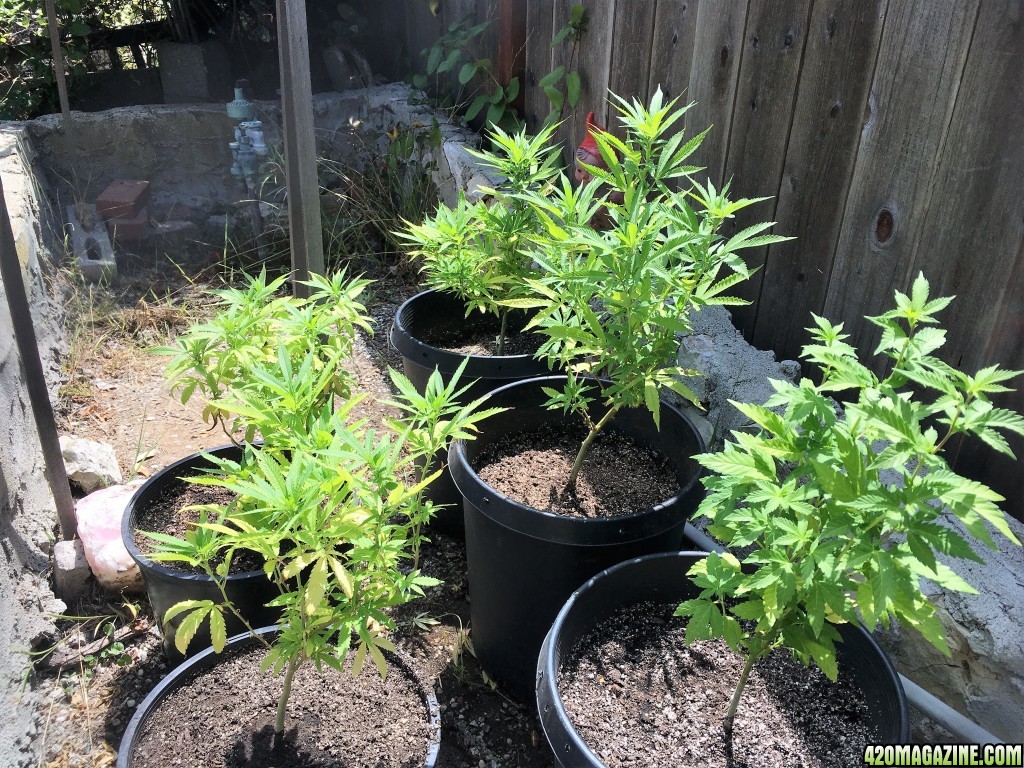
And one of Methuselah sitting near his den by the Mr. Lincoln roses
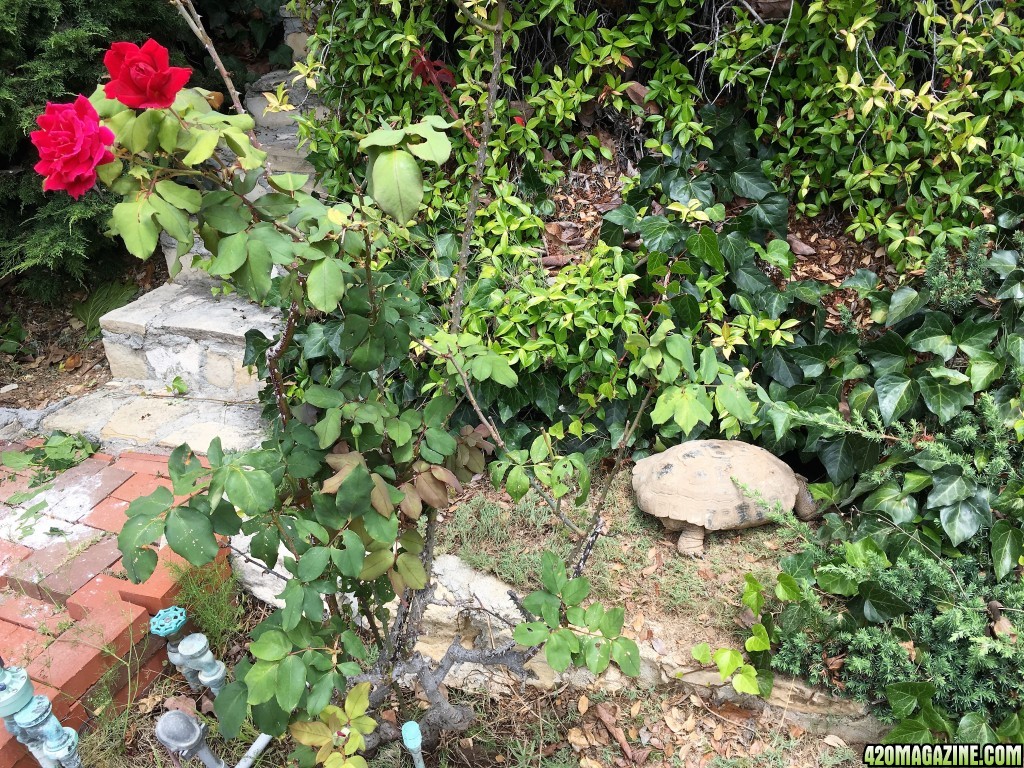
And one of Methuselah sitting near his den by the Mr. Lincoln roses
Tortoise looks happy, plants looking better but roses are hungry too, LOL. Seriously don't be afraid to up the dose, MJ is a very heavy feeder, and those plants can take a bit more than a standard dose. I'm growing in 100 gallons, and I use double the recommended dosage for "heavy feeding plants" and my girls love it (earth juice line)
- Thread starter
- #204
Tortoise looks happy, plants looking better but roses are hungry too, LOL. Seriously don't be afraid to up the dose, MJ is a very heavy feeder, and those plants can take a bit more than a standard dose. I'm growing in 100 gallons, and I use double the recommended dosage for "heavy feeding plants" and my girls love it (earth juice line)
With the D&S Growology plan I have to be careful, I've dealt with nitrogen toxicity and excess salt accumulation which makes it difficult to flush. I'm only using these fast acting nutrients to get them out of a rut (as they are not organic nutrients) from their cloning period. Then, I switch over to probiotic Dr. Earth teas for the transition to flower, then to bat guano at the end, to coincide with the organic growing medium.
Roses are definitely hungry, just ordered some special fertilizer for them. They were nearly neglected for 10 years, so trying to revive them. They are on 40-50 year old grafted root stock.

Methusalah and a frosty Underdawg - nice!
tHANK YOU
tHANK YOU

- Thread starter
- #206
They definitely responded positively. Perfect, thankful that D&S Step 2 has gotten me out countless "nutrient ruts", really always happy to see the results of a plant which goes from raggity/hungry to nice green and full of growth.
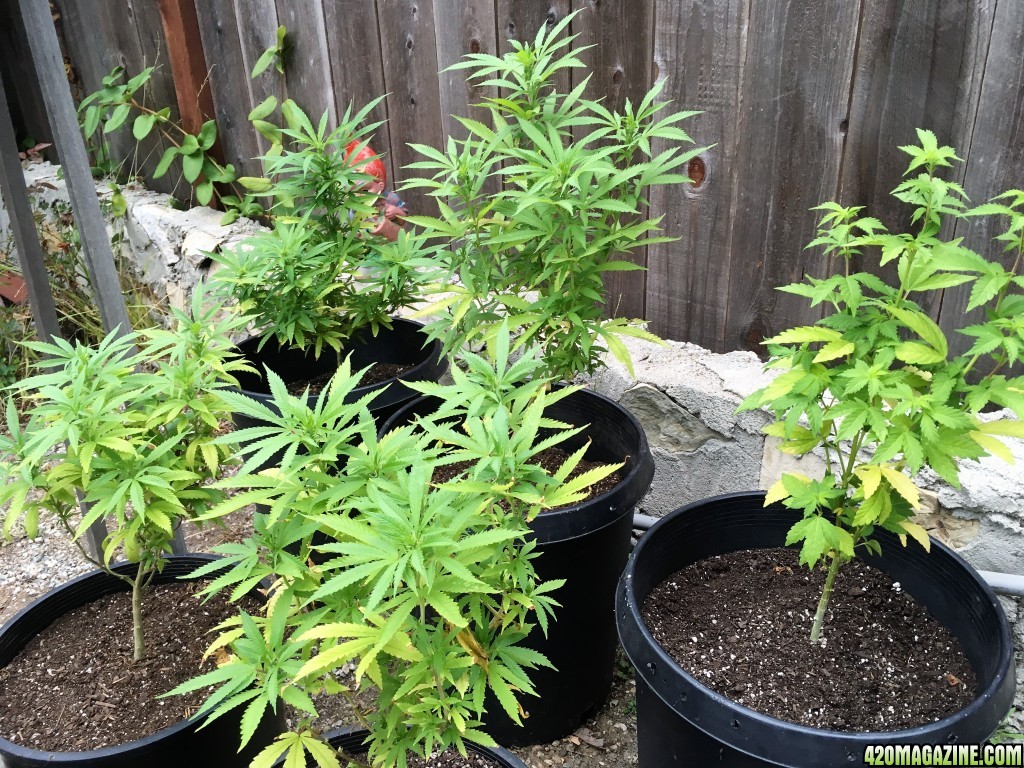
I do plan to feed another top off dose once they dry out in the pots more.
I do plan to feed another top off dose once they dry out in the pots more.
- Thread starter
- #207
Fertilized again today one more time with the veg nutes (actually the OGK on the right , today was the first time it was fertilized). Hopefully they'll grow a bit more. They're already starting to pre-flower though. Next up I'll feed with the probiotic Dr. Earth tea. They'll at least be nice to look at even though they won't produce a fortune.
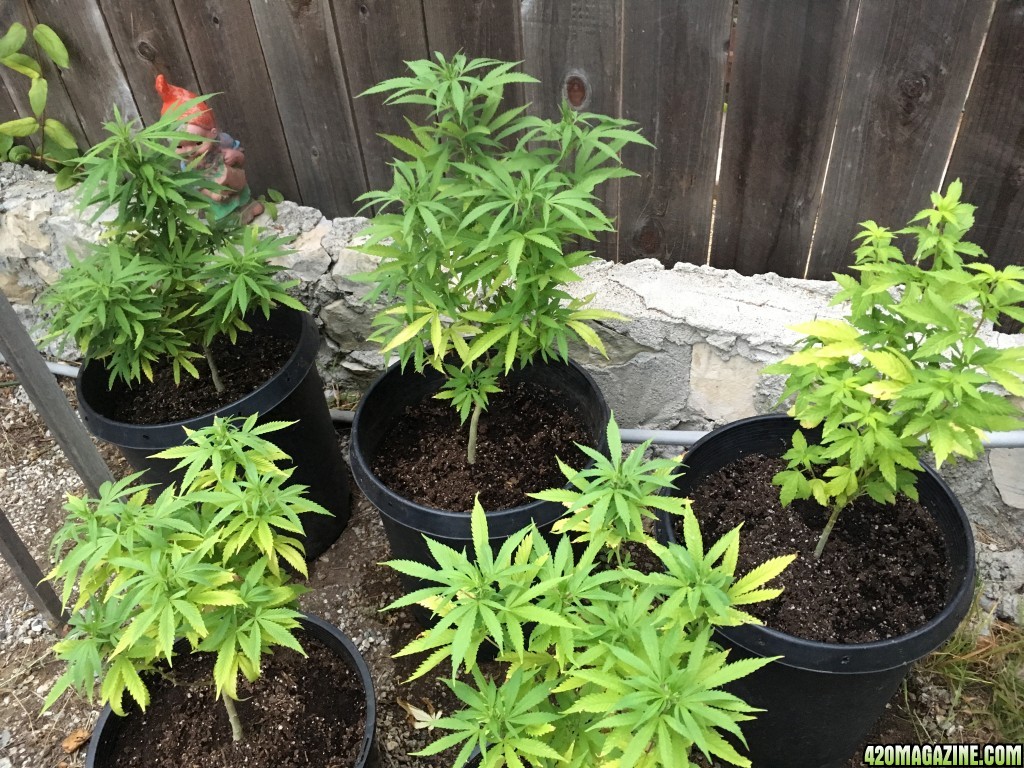
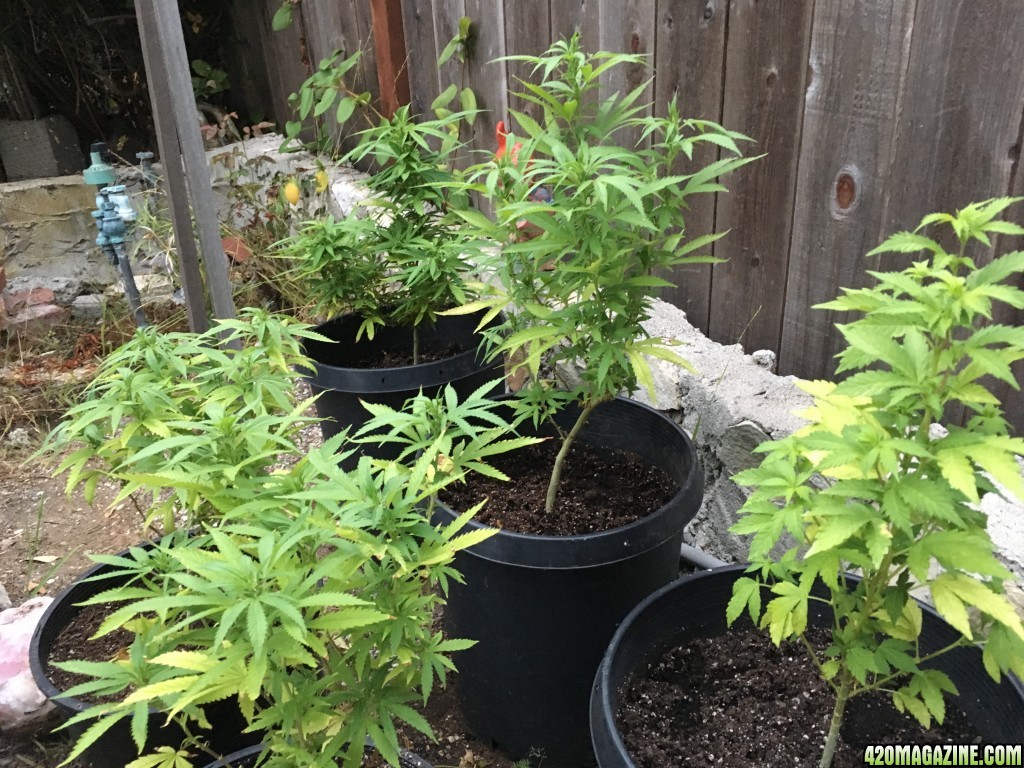
 Hope everyone's gardens are going good and green. Flowering is upon us.
Hope everyone's gardens are going good and green. Flowering is upon us. 
 Hope everyone's gardens are going good and green. Flowering is upon us.
Hope everyone's gardens are going good and green. Flowering is upon us. 
Hope everyone's gardens are going good and green. Flowering is upon us.

Thanks! Gardens are going good

Outdoors, saw no Japanese beetles today, just butterflies.
Indoors, harvested my largest bud yet
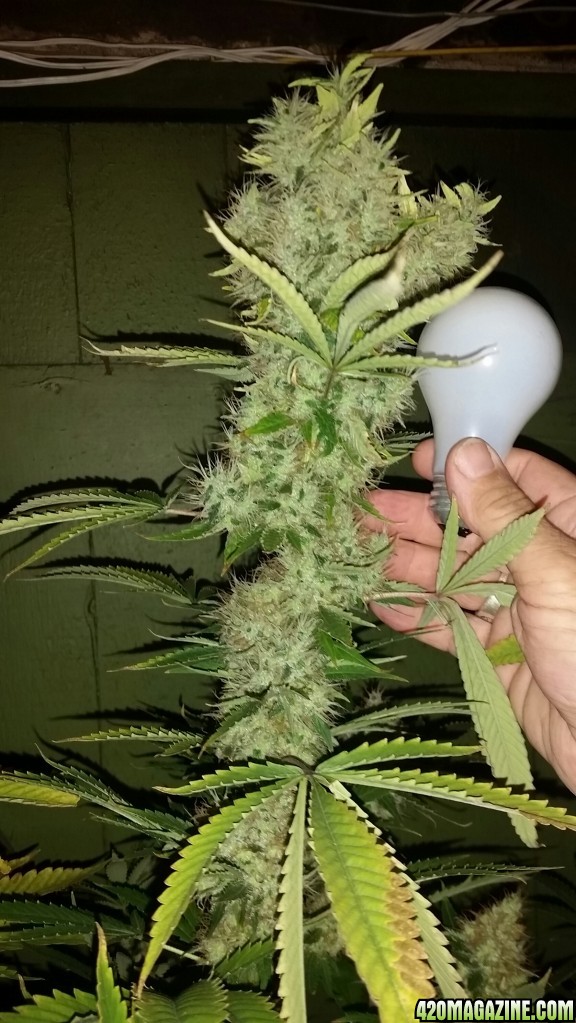
KushGod
New Member
On the rebound, group (SDD, JD, SC, OGK)
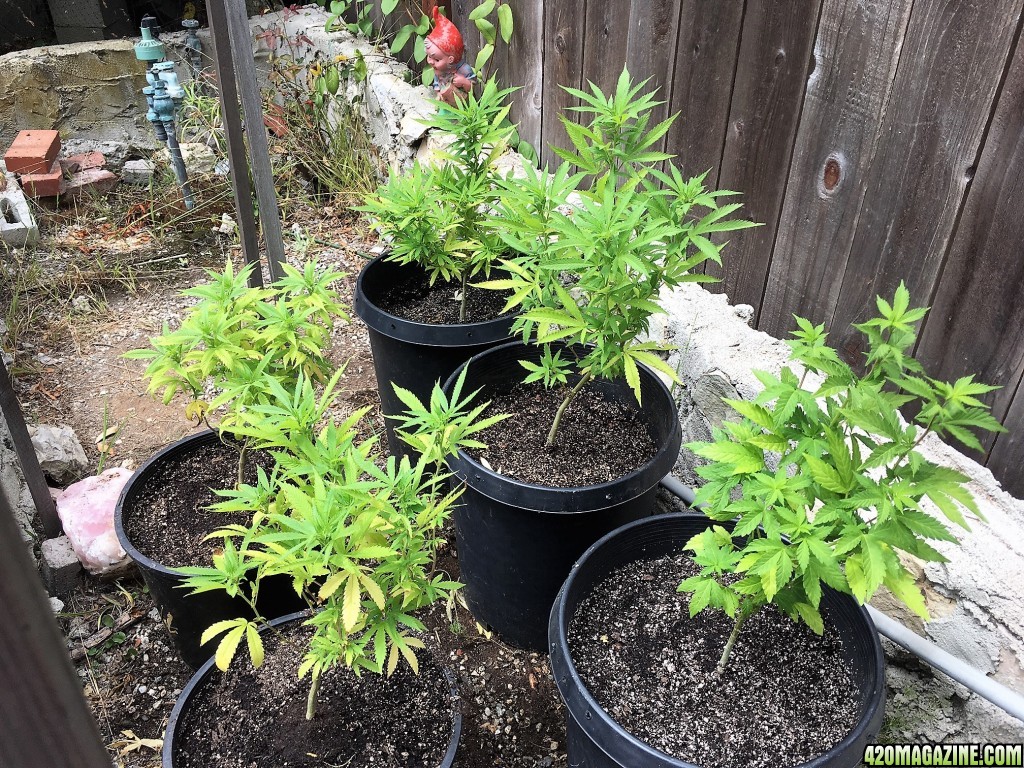
Here is that Underdawg (chemo pheno) that is being force flowered, this stuff is gonna be incredible, it smells phenomenal.
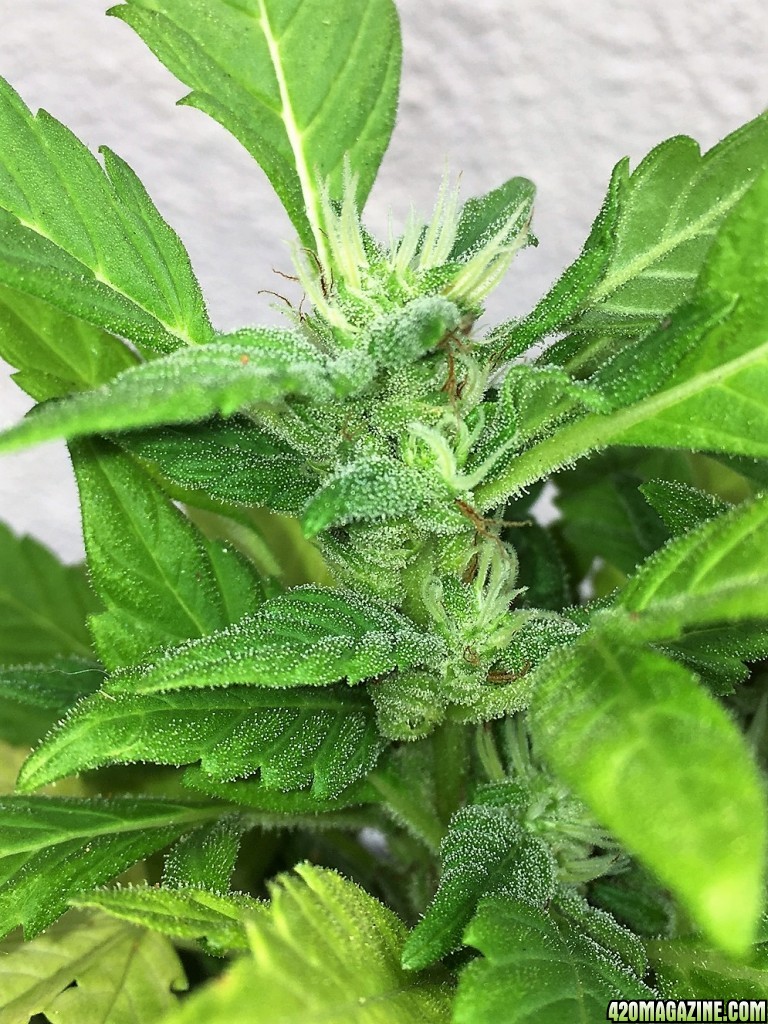
Looking fantastic. It's always great to see that frost whatever the specimen. I'm currently force flowering a few outdoor myself so I'm keeping an eye on how yours go. Lovely plants and some fascinating strains and phenos you have going on. Wish I could try your Underdawg as it sounds excellent and any chemdawg/stardawg offspring is bound to be tasty. Great work mate
- Thread starter
- #210
Thanks Radogast for the nice update on that amazing cola. Well done my friend! 
Awesome KushGod, thank you for bringing the positive energy . The Underdawg is one of the most incredible things I've smelled, actually I'm not sure if it is the Ultra Dawg, I'll have to double check the seed list.
. The Underdawg is one of the most incredible things I've smelled, actually I'm not sure if it is the Ultra Dawg, I'll have to double check the seed list.
Anyhow, in regards to my force flowers, I think I came across three different variants of the UD (chem pheno), here they are:
Variant #1 (UD chem pheno)
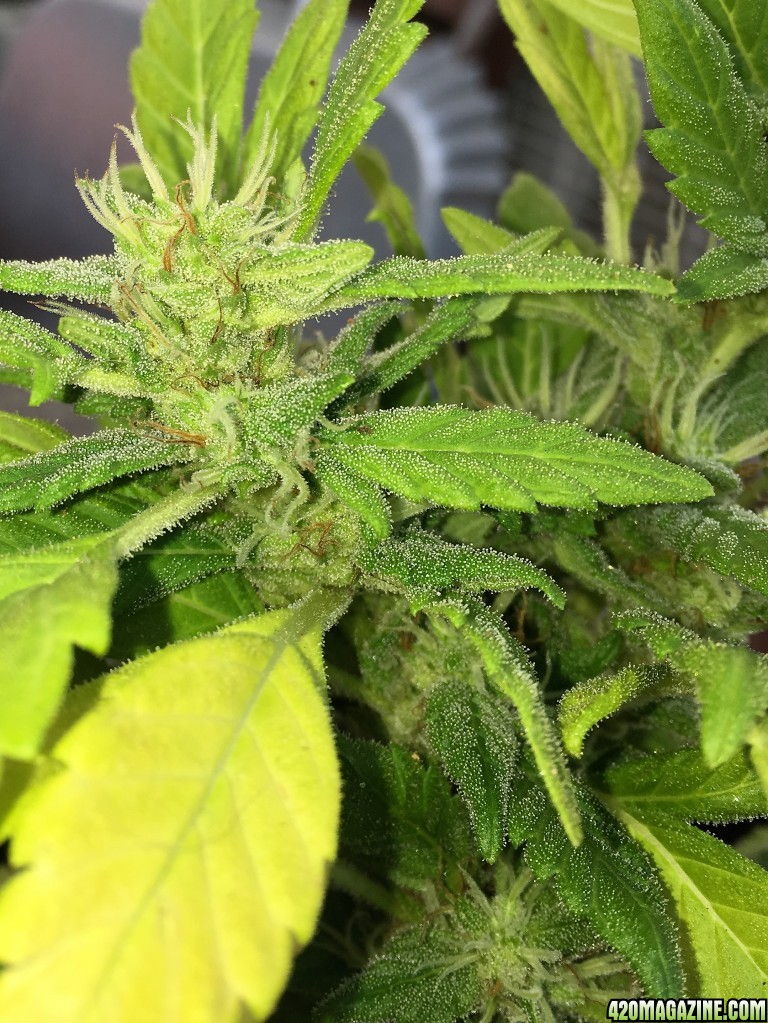
Variant #2 (UD chem pheno)
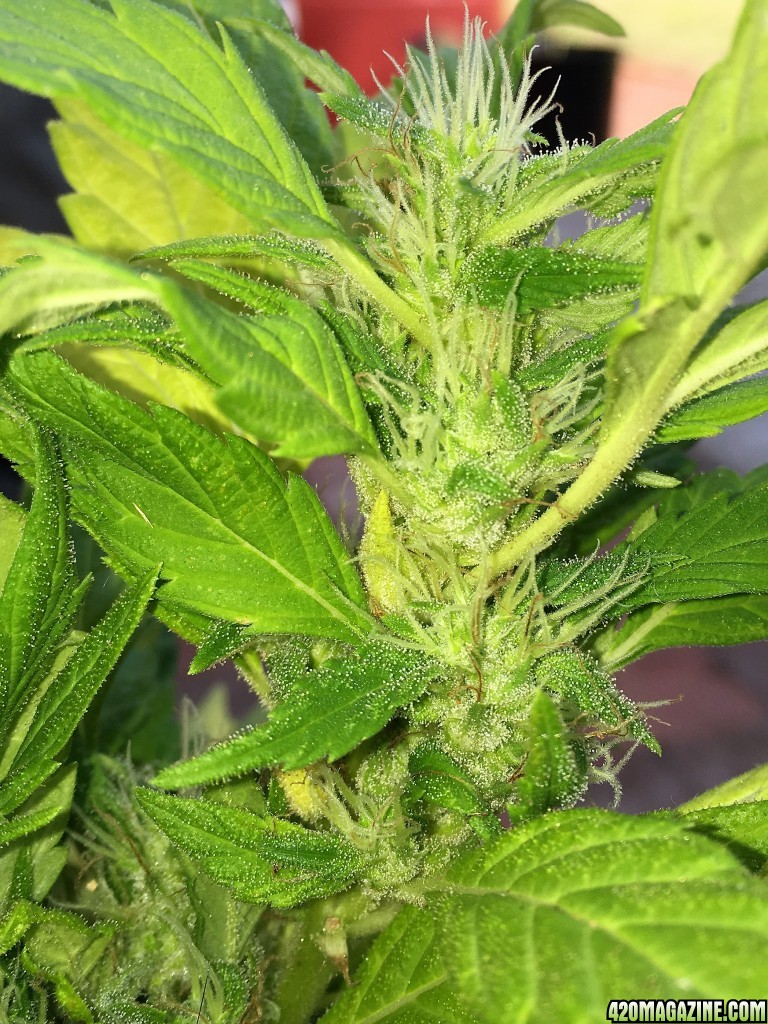
Variant #3 (UD chem pheno)
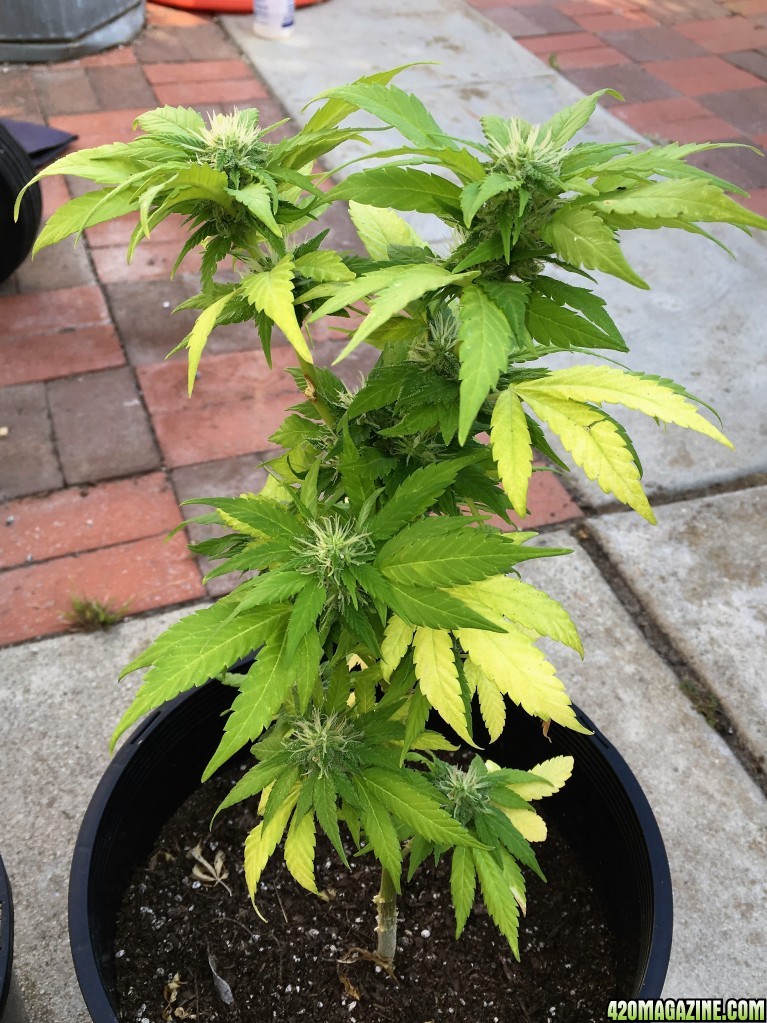
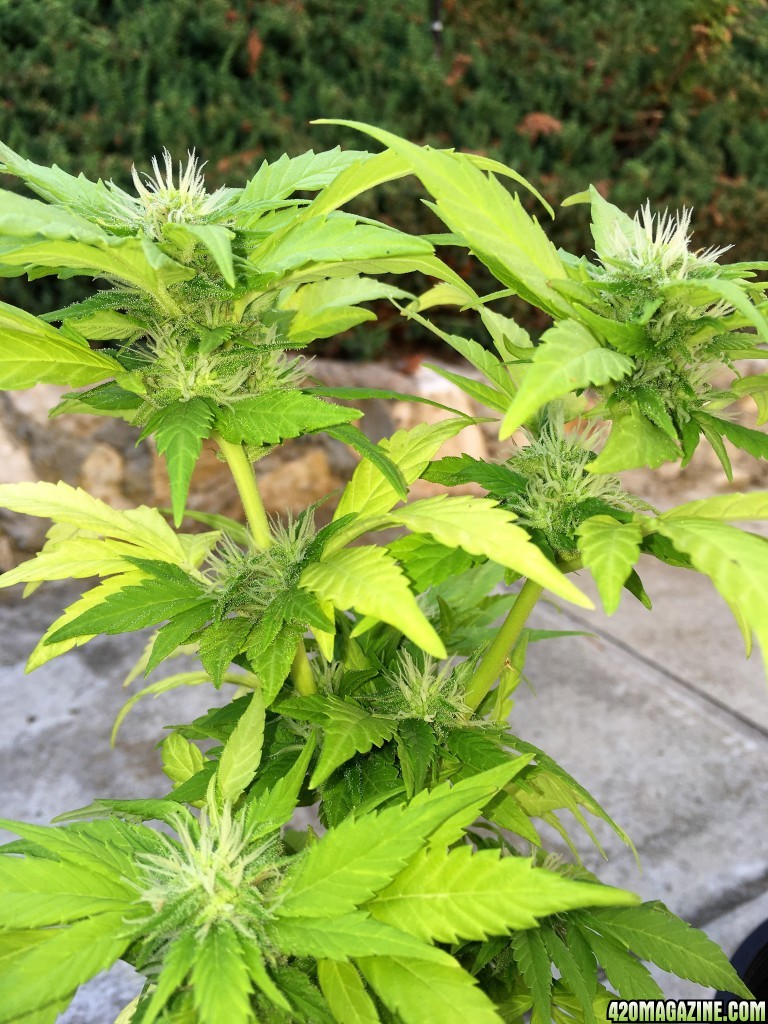
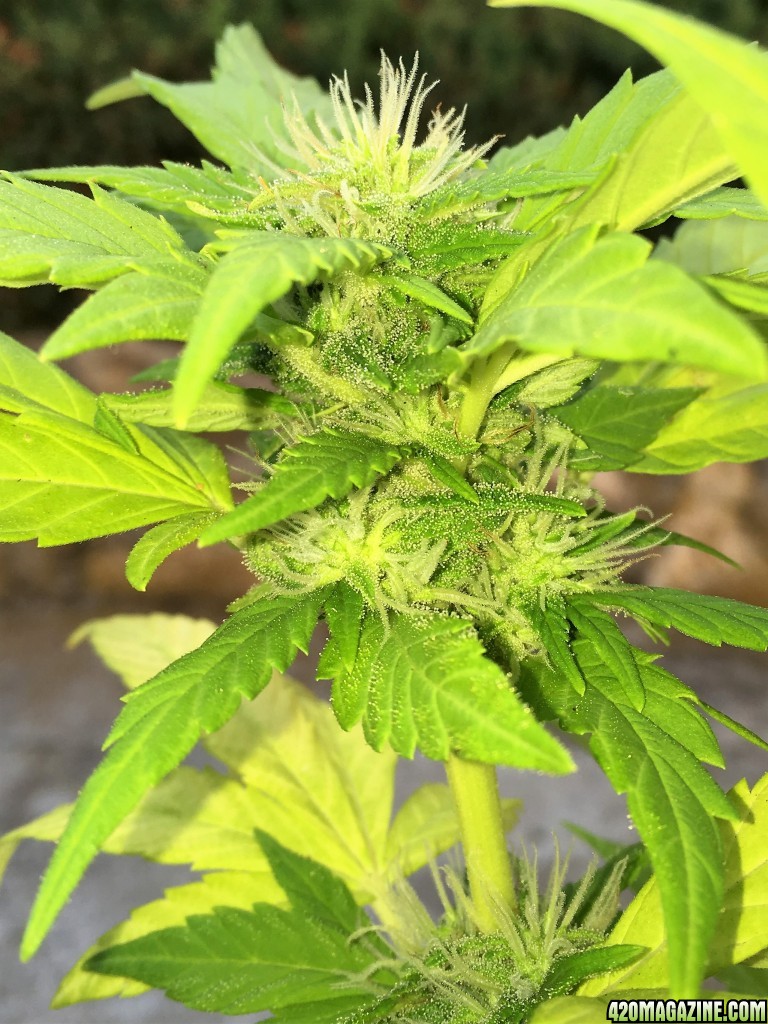
Here are the vegging mothers (OG Kush and two UDs out for Sun during the day, I plan to take clones off these in the future, then release these mothers for a lil fall crop
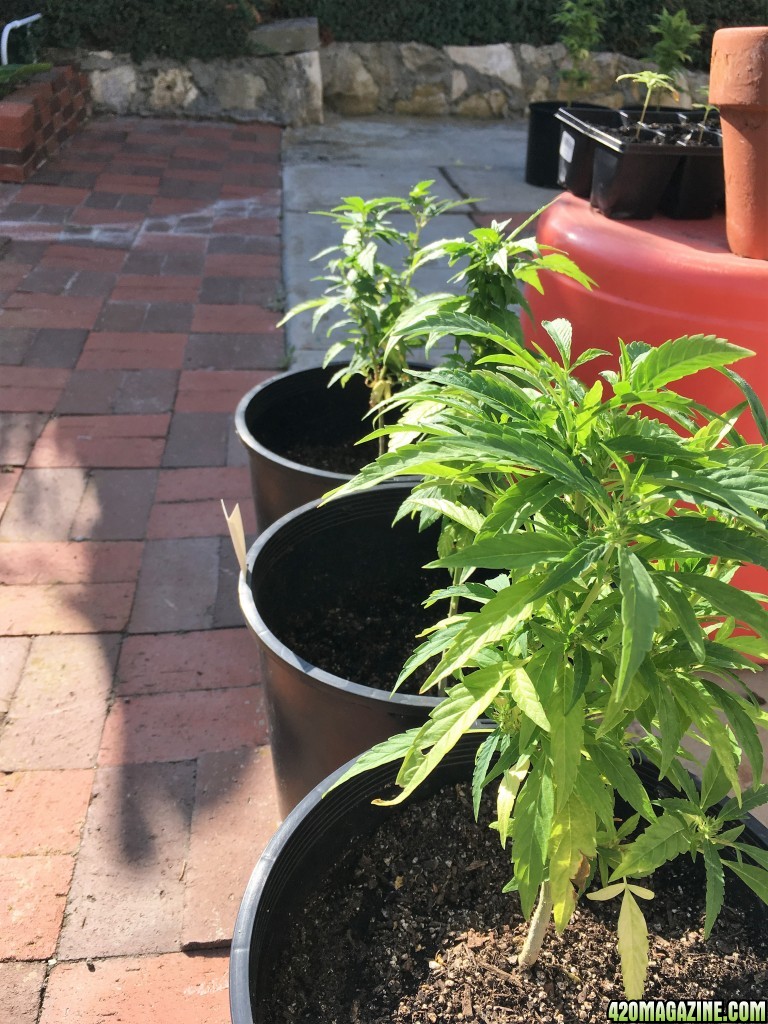
I do still have those Maui Waui seedlings and the sativa Blackberry seedling growing, though slow, who knows what they'll do or if they'll grow into anything nice.

Awesome KushGod, thank you for bringing the positive energy
 . The Underdawg is one of the most incredible things I've smelled, actually I'm not sure if it is the Ultra Dawg, I'll have to double check the seed list.
. The Underdawg is one of the most incredible things I've smelled, actually I'm not sure if it is the Ultra Dawg, I'll have to double check the seed list.Anyhow, in regards to my force flowers, I think I came across three different variants of the UD (chem pheno), here they are:
Variant #1 (UD chem pheno)
Variant #2 (UD chem pheno)
Variant #3 (UD chem pheno)
Here are the vegging mothers (OG Kush and two UDs out for Sun during the day, I plan to take clones off these in the future, then release these mothers for a lil fall crop
I do still have those Maui Waui seedlings and the sativa Blackberry seedling growing, though slow, who knows what they'll do or if they'll grow into anything nice.

- Thread starter
- #211
A couple more close ups of that first UD variant, which is closest to harvest. Boy she smells so good right now. That's what I call a "sampler plant" 
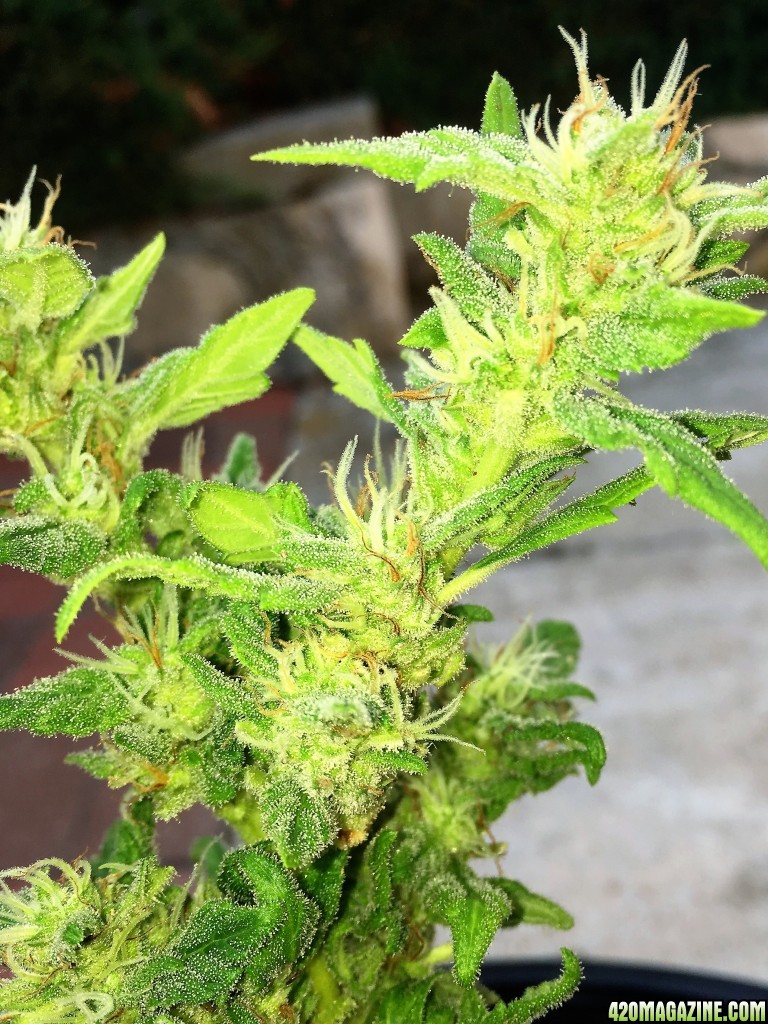
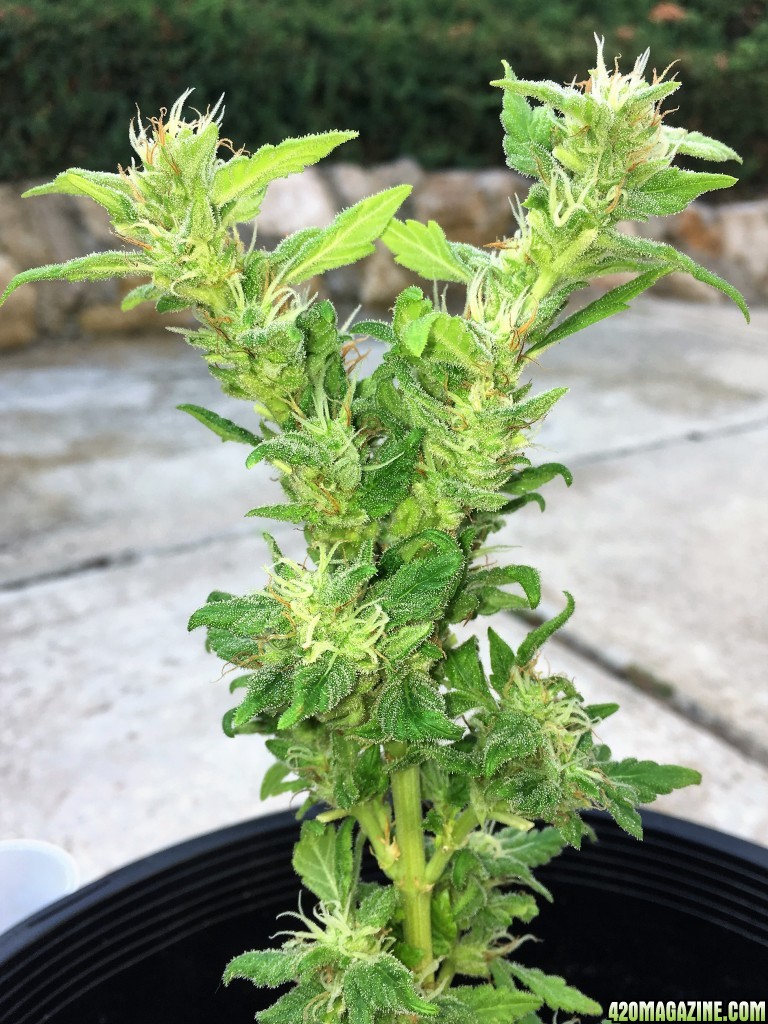

420GoddessxX
Well-Known Member
I always heard that it turns purple a lot of the time when it gets too cold...Interesting discussion point about the pigmentation, anthocyanin is the correct reason for why the plant turns purple. There are various speculations as to the nature of this, the most prominent being a genetic reasoning; that is, when the plant goes through the changes of flowering, it is evolutionary advantageous to become purple - in order to attract insect pollinators who view our world in a totally different wavelength. Bees, for example, base their vision on higher energy light (towards green, blue, and UV), this is similar in night time pollinators such as moths. When a moth comes across a purple flower top, it glows in contrast to the dark, making it easier to spot during the night. I suspect that when we have a flowering event, the plant responds to "temperature induced pigment production" that coincides with the need to reproduce or spread genes (via dire pollination), as a last resort at repopulation. In other words, an enzyme (protein) is produced from the DNA via temperature induction, which then goes on to catalyze the formation of special pigments (most likely from sugar carbon skeletons)
To clear up a misconception, anthocyanin is not a sugar itself (it's a pigment), but can be covalently linked to sugar (and indeed stored as a sugarized complex).
In contrast to the obvious evolutionary advantage for "going purple", I wonder the advantage of anthocyanin as a electron funnel as compared to chlorophyll in photosynthesis (I'm sure there are published studies). If you monitored the photosynthetic rate of a totally purple plant and compared it to a totally green plant, you could begin to debate about whether purple is a superior energy producer compared to green or not. Just guessing, but because a plant is purple - it means it is absorbing everything BUT purple, and thus the pigments are being excited by less energetic radiation. Comparing to a green plant, which absorbs everything BUT green (it must then be absorbing some high energy near-UV light), I would argue that the more near-UV light the plant can take in (to an extent), the more readily the pigments are excited, and thus increasing the electron funneling capacity and perhaps photosynthetic rate.
Good discussion point, brother
420GoddessxX
Well-Known Member
I like your journal your very thorough in explaining and the pictures help in showing. I am trying my first outdoor grow they are random bag seeds but it was some really good and both came from same bud I cracked it open and both popped out.I always heard that it turns purple a lot of the time when it gets too cold...
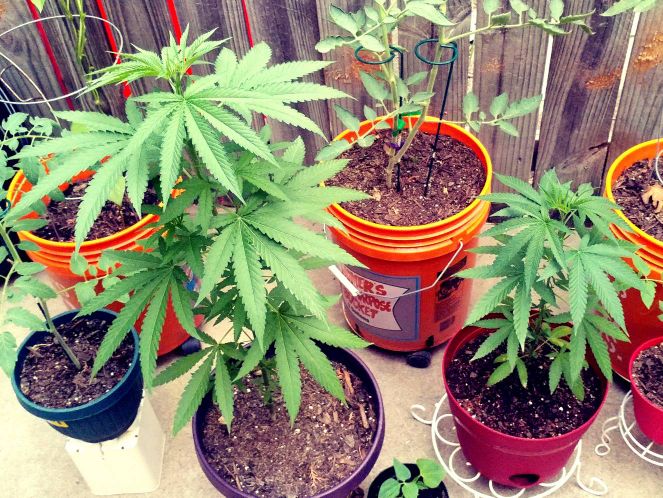
Would you top or LST these? I really don't want them to get huge plus would taking them inside when they flower be an issue it's really hot where I am and they seem to thrive.
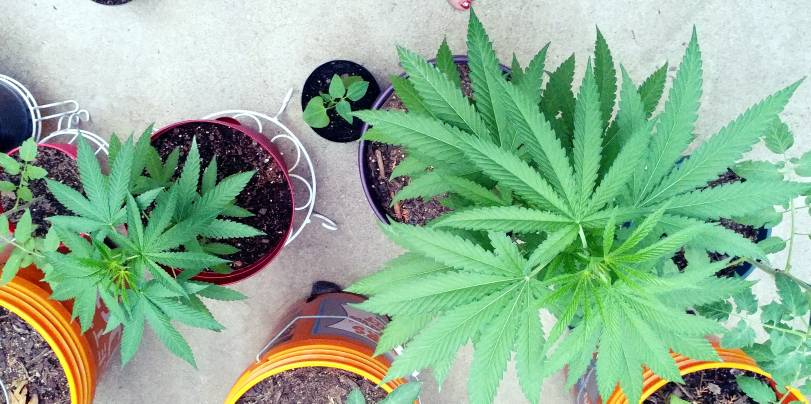
- Thread starter
- #214
Hi 420GoddessxX,
I wouldn't top or LST them at this point, since we are about to head into flowering. It will probably just stunt them. They likely won't get too big at this point. I would just let them do their thing.

And thank you for the kind words
I wouldn't top or LST them at this point, since we are about to head into flowering. It will probably just stunt them. They likely won't get too big at this point. I would just let them do their thing.


And thank you for the kind words

I like your journal your very thorough in explaining and the pictures help in showing. I am trying my first outdoor grow they are random bag seeds but it was some really good and both came from same bud I cracked it open and both popped out.
Would you top or LST these? I really don't want them to get huge plus would taking them inside when they flower be an issue it's really hot where I am and they seem to thrive.
Goddess...agree w/ RL but a FIM is low stress & will both slow vertical growth while pushing lateral growth. Not too late to do.

- Thread starter
- #216
Goddess...agree w/ RL but a FIM is low stress & will both slow vertical growth while pushing lateral growth. Not too late to do.
Yeah you could FIM right now, but depending on the flowering rate you could end up with a dual headed twig like what I got

I think the plant will produce 1-2 bowls
 I'm not sure I'd rather see a nice 1 cola, or 2 little twigs. Basically the plant was a failure in that when I released it from 18/6 veg it went directly to flower, so I figure I'd just finish it off by force flower and make room for the ones that were actually vegging.
I'm not sure I'd rather see a nice 1 cola, or 2 little twigs. Basically the plant was a failure in that when I released it from 18/6 veg it went directly to flower, so I figure I'd just finish it off by force flower and make room for the ones that were actually vegging.But I def. agree, if you want to keep them short, FIM, and funnel the auxins to promote more branching, thus increasing lower node yields
LOL been there Lester done that. Cute little bugger. I'd doing acouple small ones too I think. They just rooted and it's pretty close to flower. Mine might get that big. I always like to see acouple three leaf after topping/before flowering starts. I'n not sure but I think I have 10 before they start showing? I myself woodn't top, it is a chancy. Your doing the carry in routine Lester? I have acouple UD variants going. Believe it or not, that's a strain I've never grown out in any shape or form. Unless it was something I didn't do my homework on. I've heard good things about it. I just hope she makes alittle larger buddage.. Hey really I woodn't care about a smaller yield if the pot got me stoned. One of the bad things about being a grower,, I don't care what anyone says,, you build a tolerance. And having a limitless supply of herbs makes it hard to get stoned anymore. Least does me. Keepem Green
That's a potent looking "twig" RL. 

- Thread starter
- #219
Full update. First the natural flowers and a few comments. Swiss Cheese has always been a super fast flowering strain, she will likely be ready to harvest in early September. This is the last Swiss Cheese, been taking clones of clones for years of it and deciding now to put her to rest and retire the SC. Flowers really quick and always did me right. It's the original Skunk #1 hybrid that gives it the fast flowering times, but the Swiss Miss that gives it an amazing pine sativa consistency.
Swiss Cheese (final specimen)
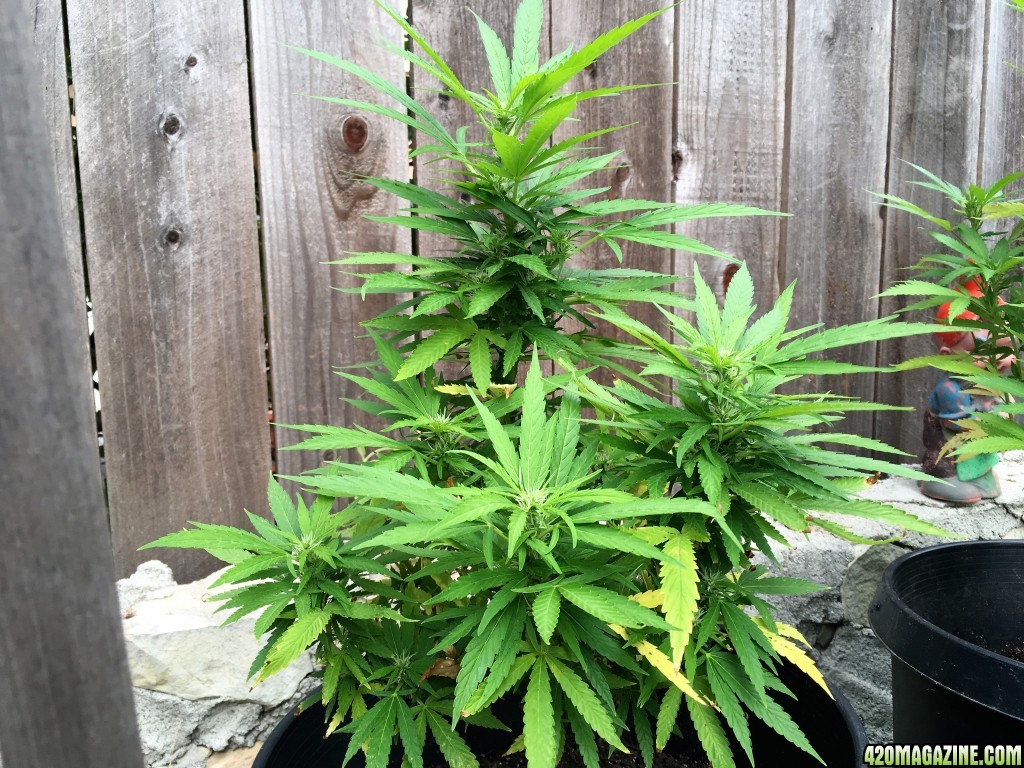
Sour Diesel Dawg plants 1,2 - while this strain is also a diamond in the rough, only grew it a few times, it's really lemon/limey (Sour Diesel X NYCD x CHEM91), should be neat though. Going to retire it.
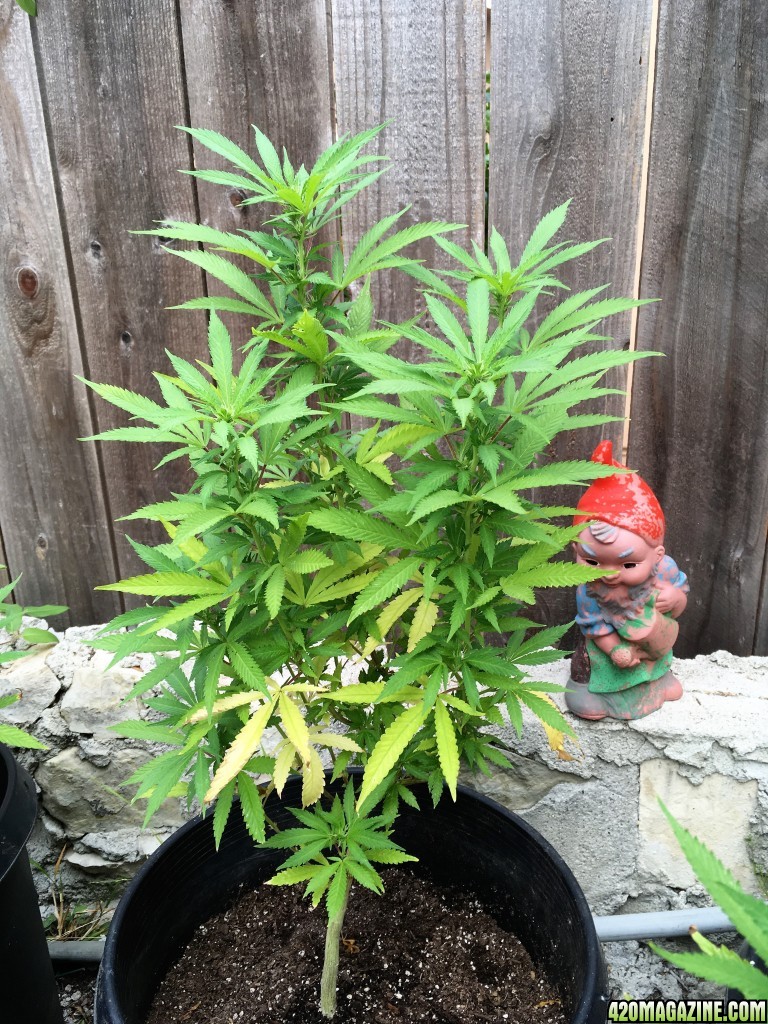
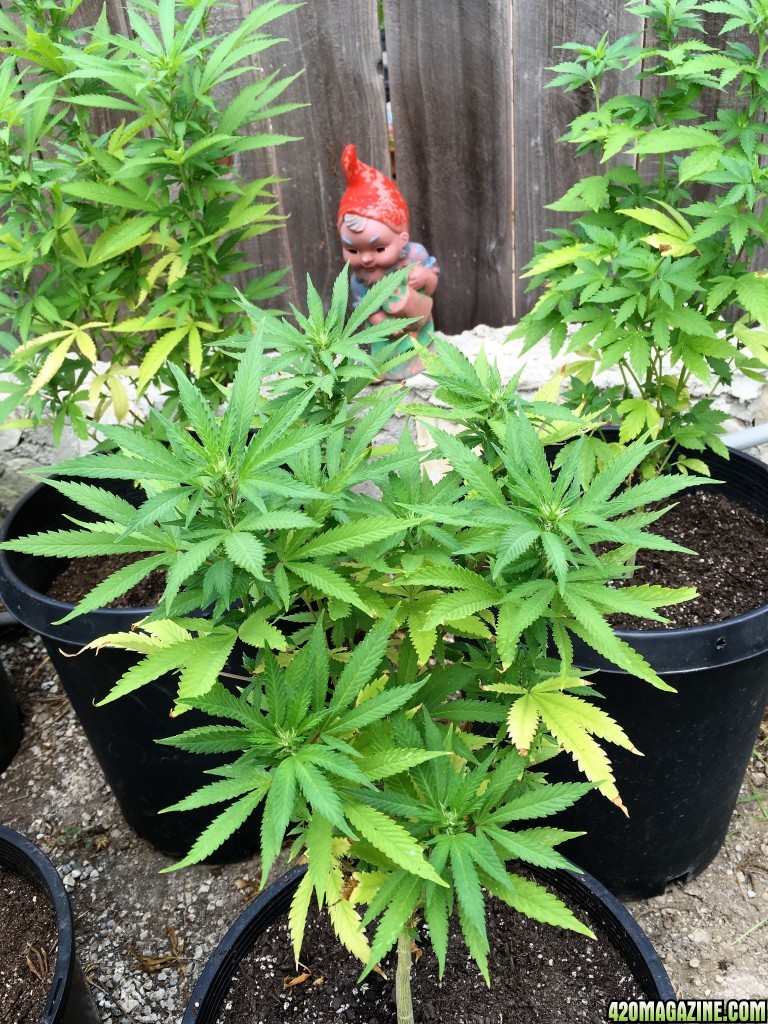
Sad to report that I am also retiring the Jack Dawg out of my fleet, she did us well - those who remember what amazing colors this strain turns like clockwork. One last JD specimen..
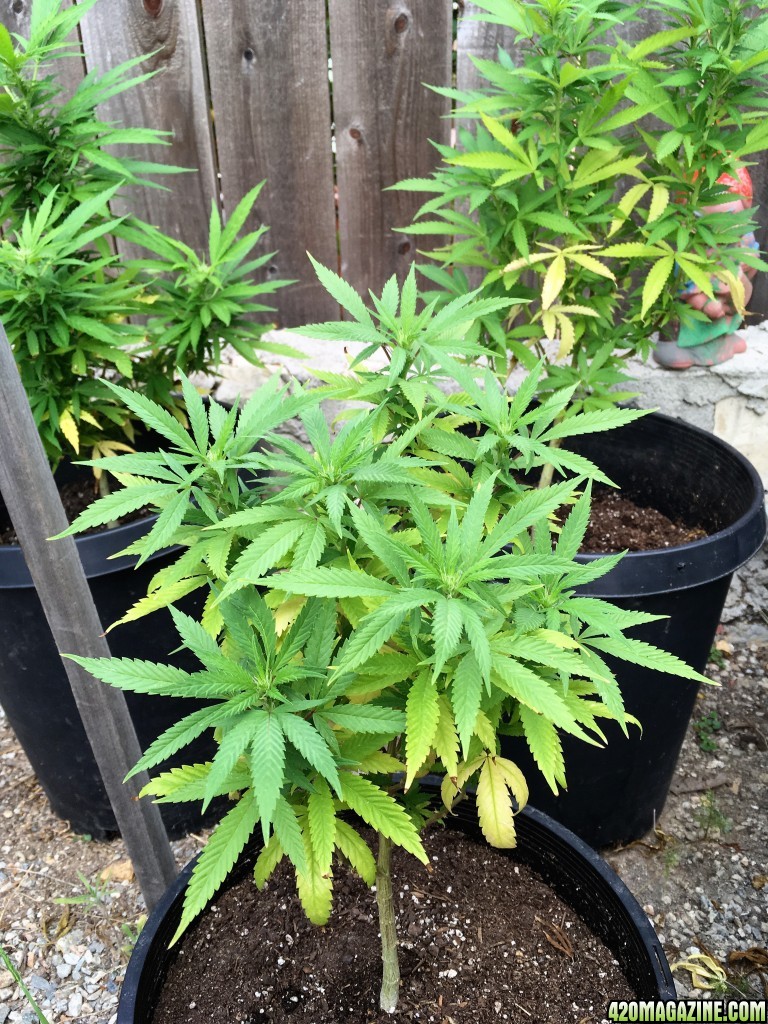
This is the new OG kush that I'm trying out. Not really sure what sort of OG it is but should be interesting as I used to love to grow OG, but stopped. It's a tough strain to get it to come out right outdoors. Seems like it's more of an indoor strain. This one I did clone because I think it's going to be pretty good,
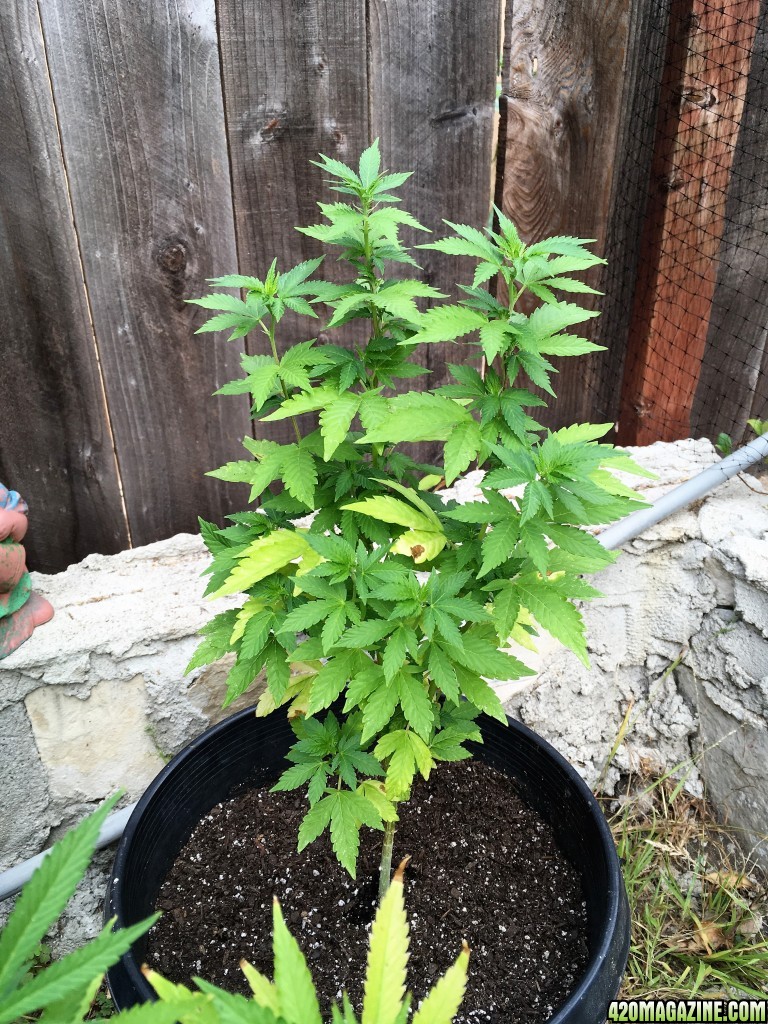
Groupie
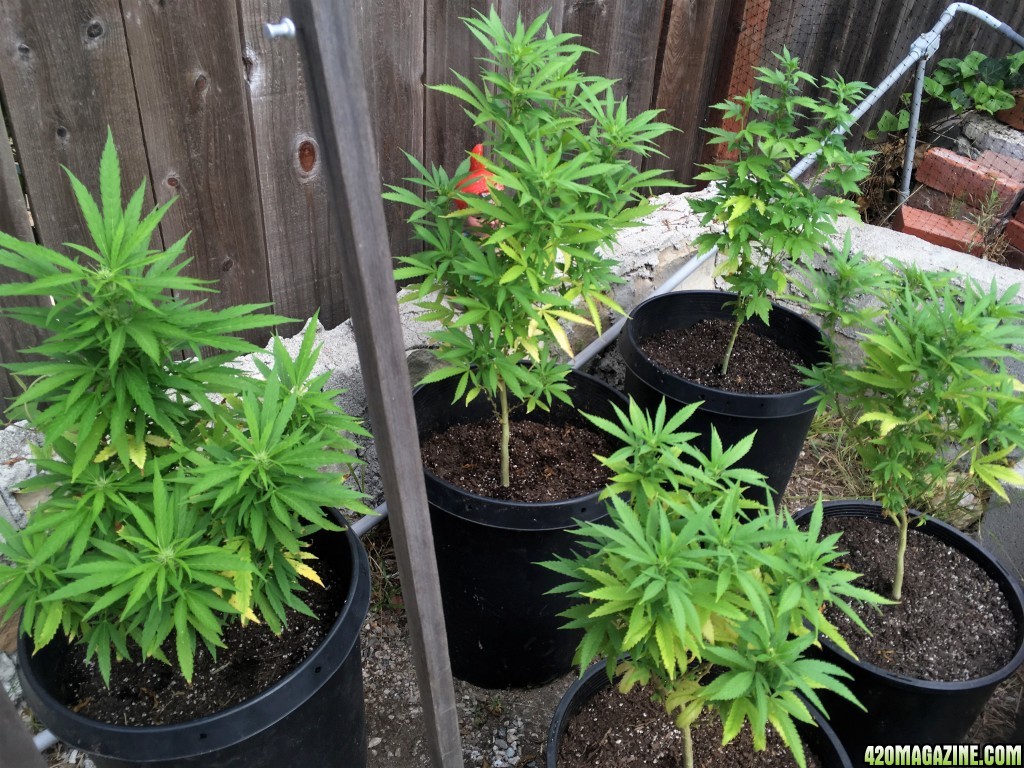
So, out with the old and in with the new. Retiring the JD, SDD, and SC. Bringing in the new UD, which I believe now to be Ultra Dawg and the OG Kush
The mothers in veg state under CFL supplementation:
UD 1 (and below it a raggity sativa Blackberry, prolly will be a male), the UD here is not really clone worthy, so I'll beef it up for a few more weeks then release it into flower.
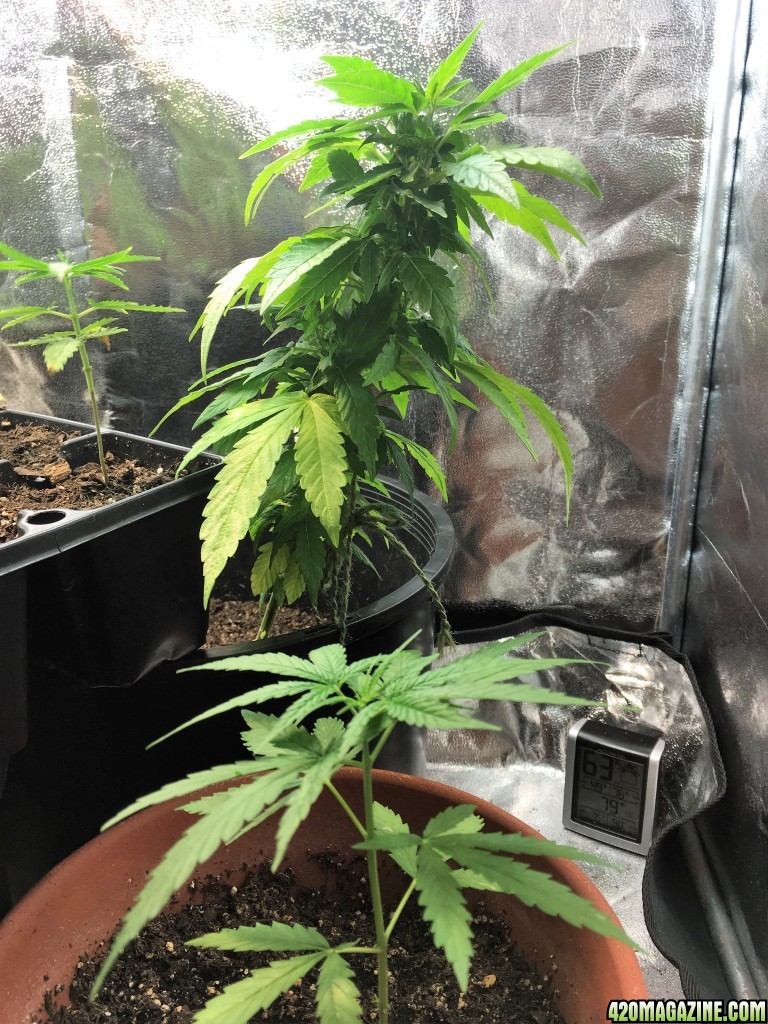
UD 2 - this one will be the true mother
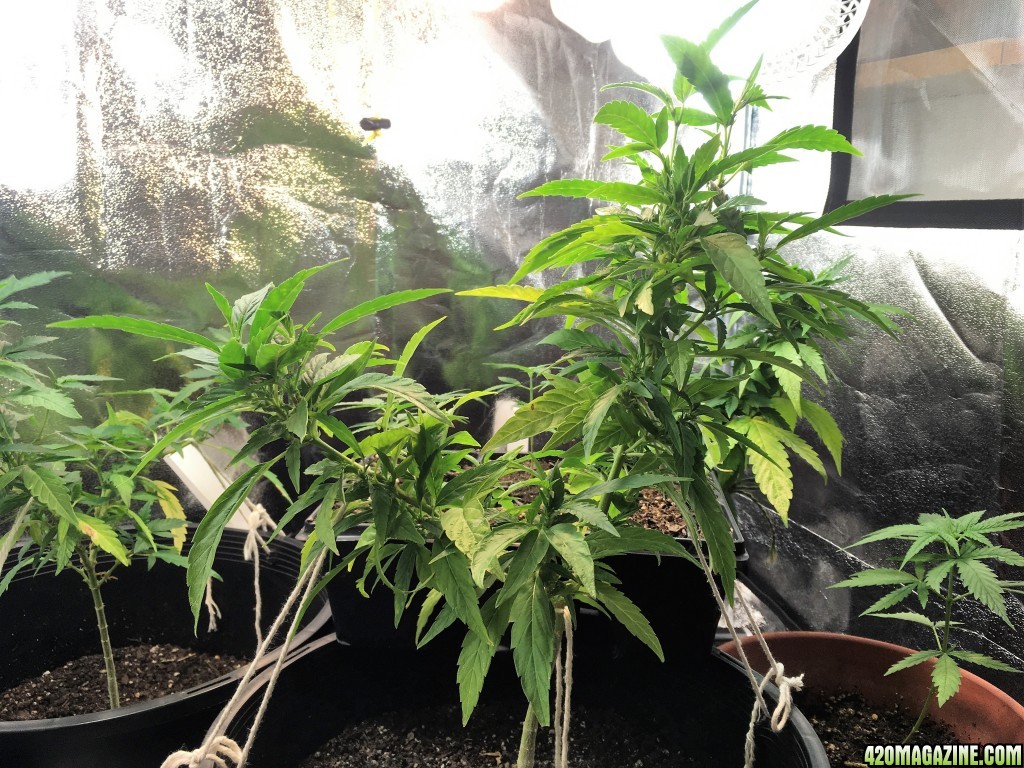
Here are the Maui Waui seedlings, I transplanted them today. With these I'm not cloning, Just wanted to grow em for fun. Theyre from an old seed pack, when I got my first cannabis seeds ever. I'm just gonna release them outside, don't much care if it flowers into a twig.
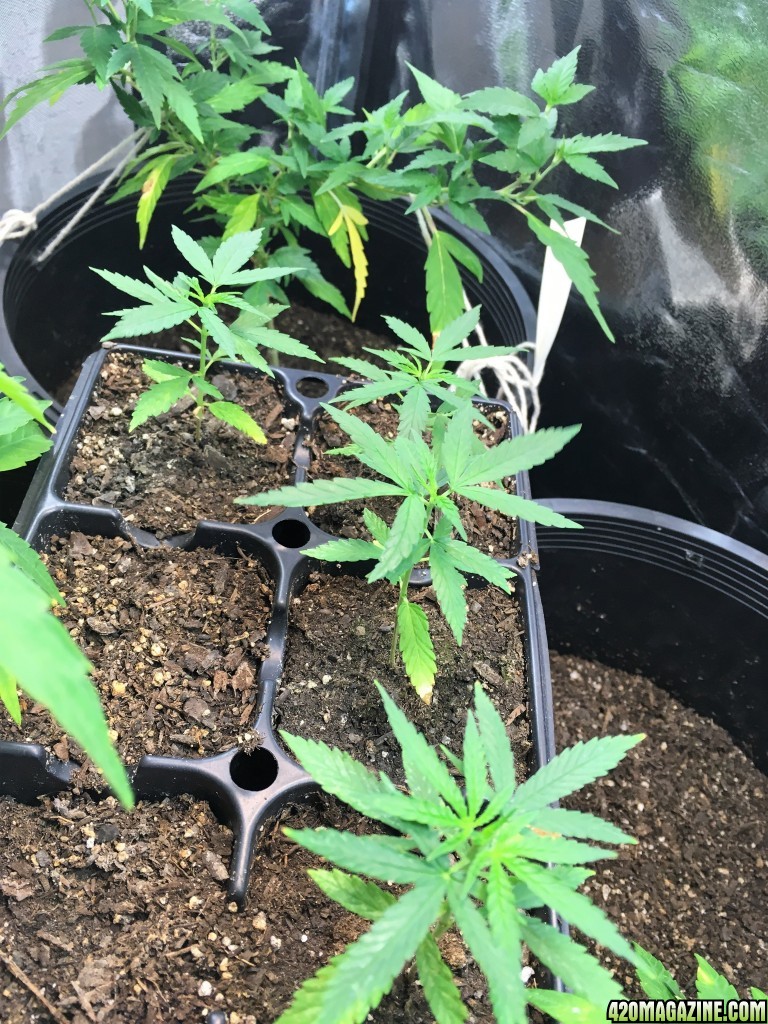
This is the new OG Kush mother I am training into a dual manifold
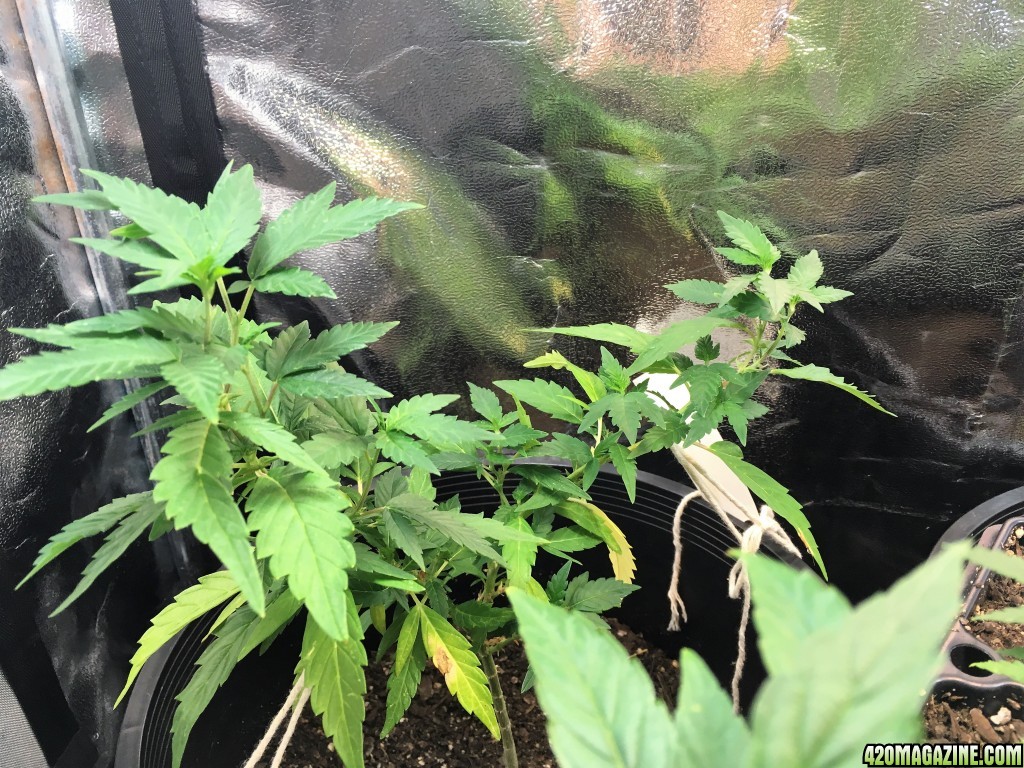
Here are a few pics of the force flowers. Harvested a couple of them early due to time circumstances
UD, that twig was ready
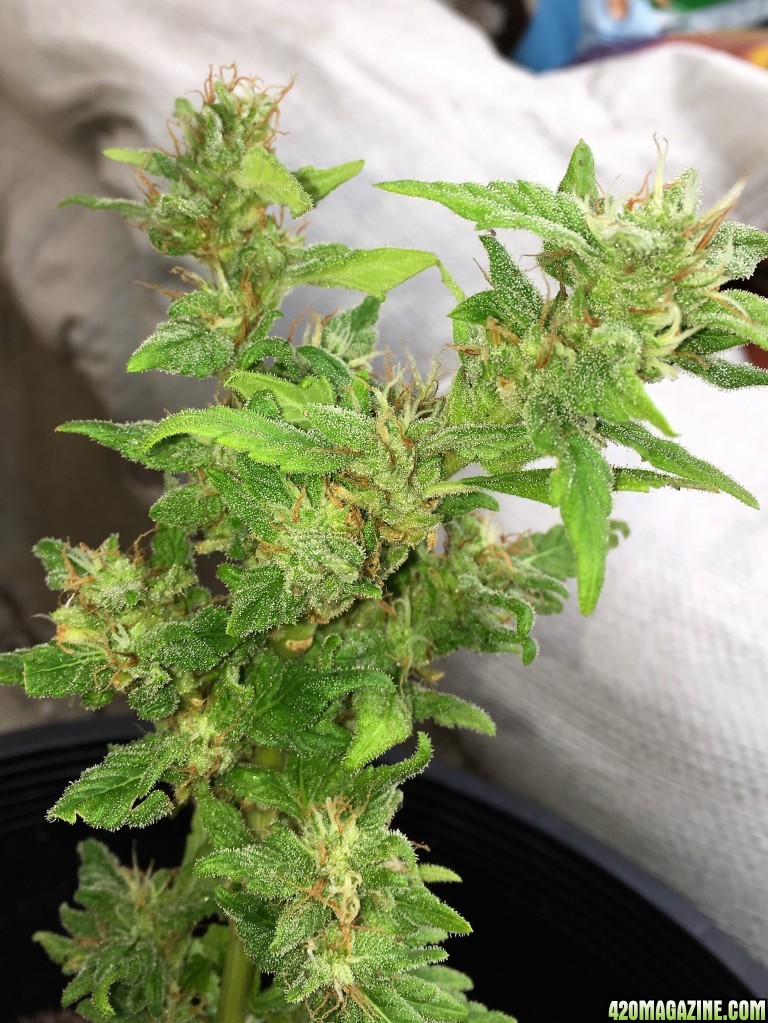
UD 2, this one I harvested a bit early. Smells like a SLH pheno though. If I thought I could have revegged it, I would, but not enough lower nodes were present
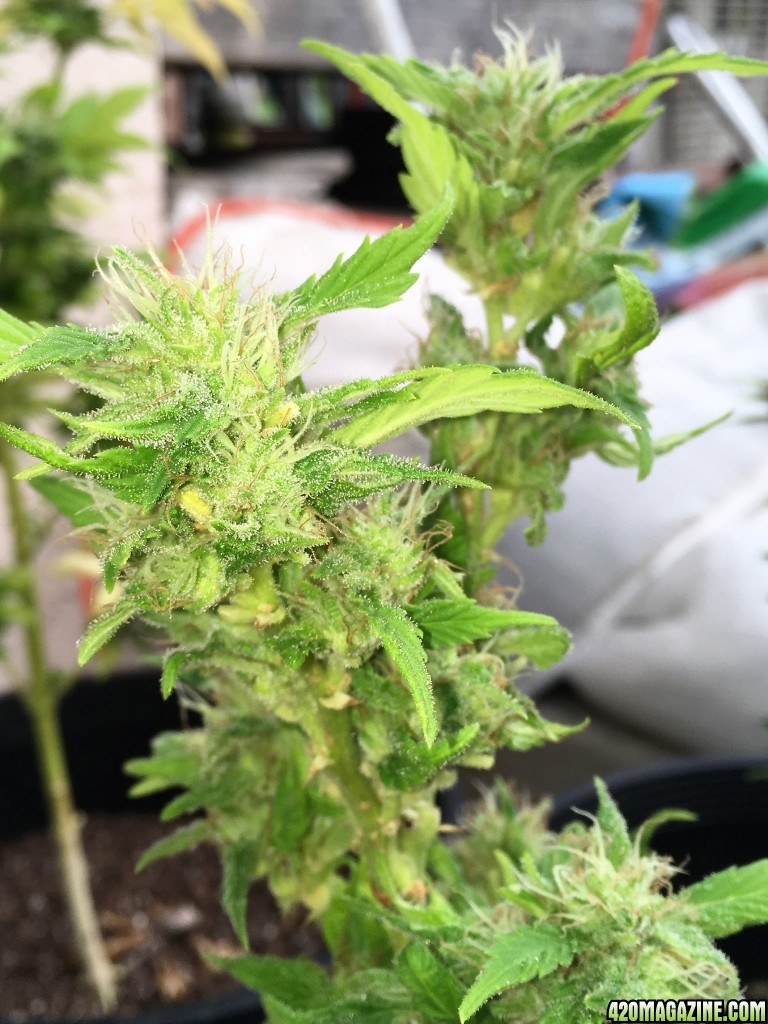
UD 3, this one will need a couple more weeks to finish up properly
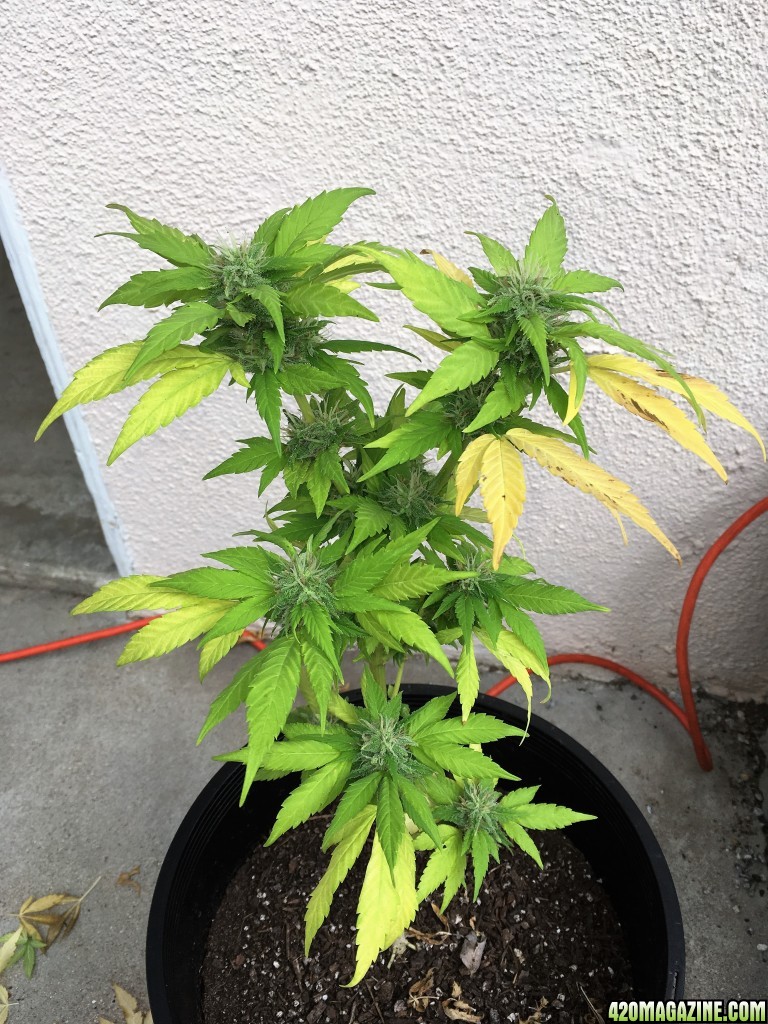
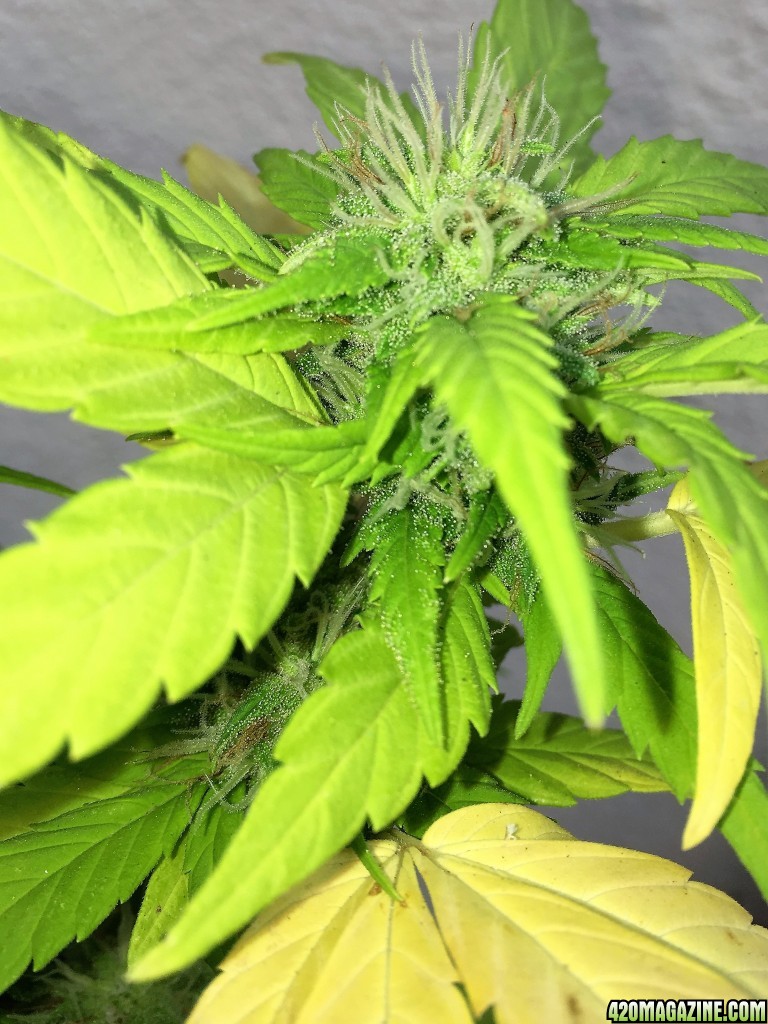
Cheers
Swiss Cheese (final specimen)
Sour Diesel Dawg plants 1,2 - while this strain is also a diamond in the rough, only grew it a few times, it's really lemon/limey (Sour Diesel X NYCD x CHEM91), should be neat though. Going to retire it.
Sad to report that I am also retiring the Jack Dawg out of my fleet, she did us well - those who remember what amazing colors this strain turns like clockwork. One last JD specimen..
This is the new OG kush that I'm trying out. Not really sure what sort of OG it is but should be interesting as I used to love to grow OG, but stopped. It's a tough strain to get it to come out right outdoors. Seems like it's more of an indoor strain. This one I did clone because I think it's going to be pretty good,
Groupie
So, out with the old and in with the new. Retiring the JD, SDD, and SC. Bringing in the new UD, which I believe now to be Ultra Dawg and the OG Kush
The mothers in veg state under CFL supplementation:
UD 1 (and below it a raggity sativa Blackberry, prolly will be a male), the UD here is not really clone worthy, so I'll beef it up for a few more weeks then release it into flower.
UD 2 - this one will be the true mother
Here are the Maui Waui seedlings, I transplanted them today. With these I'm not cloning, Just wanted to grow em for fun. Theyre from an old seed pack, when I got my first cannabis seeds ever. I'm just gonna release them outside, don't much care if it flowers into a twig.
This is the new OG Kush mother I am training into a dual manifold
Here are a few pics of the force flowers. Harvested a couple of them early due to time circumstances
UD, that twig was ready
UD 2, this one I harvested a bit early. Smells like a SLH pheno though. If I thought I could have revegged it, I would, but not enough lower nodes were present
UD 3, this one will need a couple more weeks to finish up properly
Cheers

Long live the twig!
Enjoyed my stroll through as always.
Enjoyed my stroll through as always.



